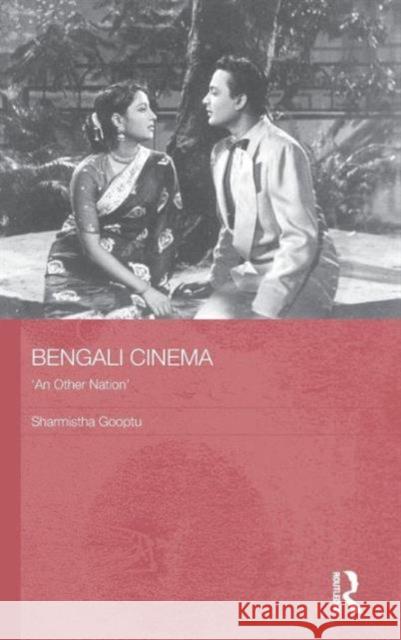Bengali Cinema: 'An Other Nation' » książka
Bengali Cinema: 'An Other Nation'
ISBN-13: 9780415570060 / Angielski / Twarda / 2010 / 234 str.
Bengali Cinema: 'An Other Nation'
ISBN-13: 9780415570060 / Angielski / Twarda / 2010 / 234 str.
(netto: 696,83 VAT: 5%)
Najniższa cena z 30 dni: 705,23
ok. 22 dni roboczych.
Darmowa dostawa!
Covering the years spanning cinema's emergence as a popular form in Bengal in the first half of the twentieth century, this book examines the main genres and trends produced by this cinema, and leads up to Bengali cinema's last phase of transition in the 1980s. Arguing that Bengali cinema has been a key economic and social institution, the author highlights that the Bengali filmic imaginary existed over and above the imaginary of the Indian nation. This book argues that a definitive history of Bengali cinema presents an alternative understanding to the currently influential notion of the Hindi film as the 'Indian' or 'national' cinema. It suggests that the Bengali cinema presents a history which brings to the fore the deeply contested terrain of 'national' cinema, and shows the creation of the 'alternative imaginary' of the Bengali film. The author indicates that the case of the Bengali cinema demonstrates the emergence of a public domain that set up a definitive discourse of difference with respect to the 'all-India' Hindi film, popularly classified as Bollywood cinema, and which pre-empted its subsumption within the more pervasive culture of the Bombay Hindi cinema. As the first comprehensive historical work on Bengali cinema, this book makes a significant contribution to both Film and Cultural Studies and South Asian Studies in general.
This book is the first comprehensive historical work on Bengali cinema. It covers the years spanning cinemaâs emergence as a popular form in Bengal in the first half of the twentieth century, studies the main genres and trends produced by this cinema, and leads up to Bengali cinemaâs last phase of transition in the 1980s, which produced its contemporary avatar. Arguing that Bengali cinema has been a key economic and social institution, which must be considered for what it brings to bear upon our existing sense of Bengali and Indian history, the author highlights that the Bengali filmic imaginary existed over and above the imaginary of the Indian nation.
This book constructs a definitive history of Bengali cinema, and makes a case for this history as positing an alternative understanding to the currently influential notion of the Hindi film as the âIndianâ or ânationalâ cinema. It argues that the Bengali cinema presents a history which brings to the fore the deeply contested terrain of ânationalâ cinema, as also its ultimate subversion, and posits the creation of an âalternative imaginaryâ of the Bengali film. The case of the Bengali cinema demonstrates the emergence of a public domain that set up a definitive discourse of difference with respect to the âall-Indiaâ Hindi film (popularly classified as Bollywood cinema), thus preempting, consciously, its own subsumption within the more pervasive culture of the Bombay Hindi cinema. While Bengali cinema could not ultimately compete with the âall-Indiaâ Hindi film, it was able to create a domain which steadfastly resisted the construction of India as a Hindi-nation.











